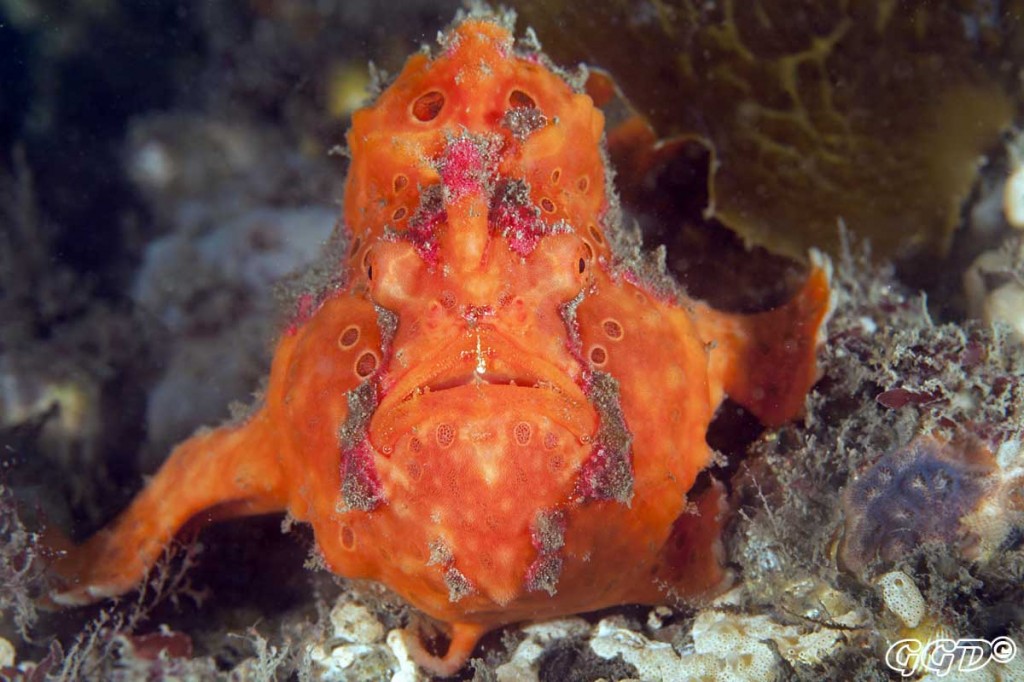Di Gaetano Dario Gargiulo
up on the pylons of the jetty in Clifton, other species of monsters are hiding often in plain sight. (trad.: sui piloni del molo di Clifton, altre specie di mostri si nascondono spesso in bella vista).
Clifton Gardens (Mosman) NSW Australia
Situato nel cuore del porto naturale della baia di Sydney e` nota meta di bagnanti sin dagli inizi della colonizzazione. Voci girano sulla presenza di pericolosi squali nella baia di Sydney e quindi gli intrepidi coloni si attrezzarono con reti anti-squalo (forse 50 anni or sono era vero). Un lungo molo a sostegno della rete fu eretto creando il più noto punto di immersione ‘the public pier’. Ci sono altri punti di immersione inclusi 2 relitti, ma le foto prese in considerazione qui sono tutte scattate sotto il ‘public pier’.
La rete si stende per una lunghezza di circa 100 m, dalla media del molo si congiunge agli speroni di roccia tramite un altro corto molo di sostegno e crea una area di nuoto ‘shark free’… Comunque gli Australiani dovrebbero temere altri tipi di mostri più che gli squali…
Sulla destra è presente il pubblic pier, luogo dove sono state scattate le foto degli organismi. Al centro della baia ad una profondità di 18/20 m vi sono dei relitti.
Nelle profondità di Clifton Garnens diverse specie di ‘scorpion fish’, torpedini e ‘anglers’ scorrazano felici ‘minacciando’ i bagnanti… non da dimenticare le decine di blue ringed octopus che si scorrazzano sulla sabbia.
‘Battlecat’ Antennarius Striatus
‘HighWattage’ large (~1m across) numb ray
‘Battlecat’ disturbed by a large octpus that destroyed its home, This Antennarius ‘walked’ around Clifton a lot before disappearing
‘Ugly’ rare flasher scorpionfish, in Clifton there are at least 6 different species of scorpionfishes including the rarest and newly descrive “Sydney Scorpionfish”
“Battlecattino” Antennarius Striatus (juvenile), particular of the eye. We have been blessed to see this little fellow few times during the last summer period. The 1st time I spotted it, it was 3 cm
“Antennarius pictus” up on the pylons of the jetty in Clifton, other species of monsters are hiding often in plain sight
Largest Antennarius Striatus ‘fishing’ the lure extended is a clear indication that this individual was ‘on business…
“Antennarius pictus” up on the pylons of the jetty in Clifton, other species of monsters are hiding often in plain sight
“Antennarius pictus” up on the pylons of the jetty in Clifton, other species of monsters are hiding often in plain sight
“Antennarius coccineus” (yellow variation) up on the pylons of the jetty in Clifton, other species of monsters are hiding often in plain sight. Named Yellowttino, this guy is rarely spotted below the great barrier reef area
“Antennarius pictus” up on the pylons of the jetty in Clifton, other species of monsters are hiding often in plain sight
“Antennarius Coccineus” rare purple variation
“Antennarius striatus” rare yellow variation
“Antennarius Pictus” on its hunting post
prey oblivious of predator that is oblivious of prey… first sighting of Battlecattino still inexperienced of the mastering of disguise
fully mimetic “flasher scorpionfish”
Fortescue scorpionfish that decided that a camera was it perfect hunting post
[banner network=”altervista” size=”300X250″]


















